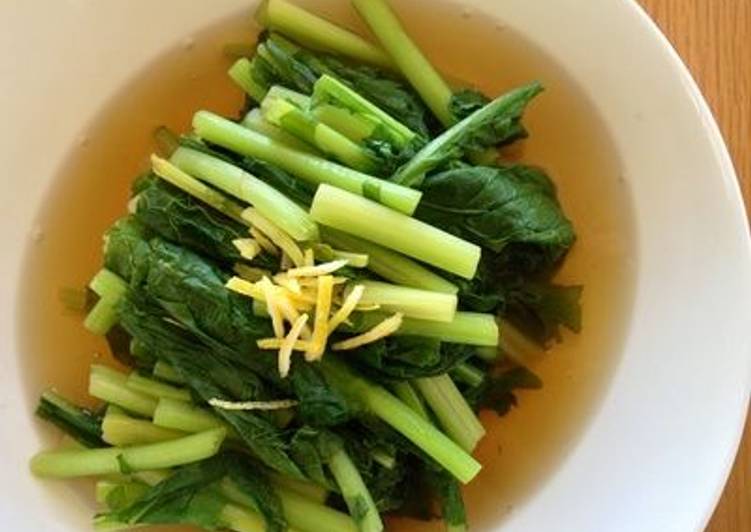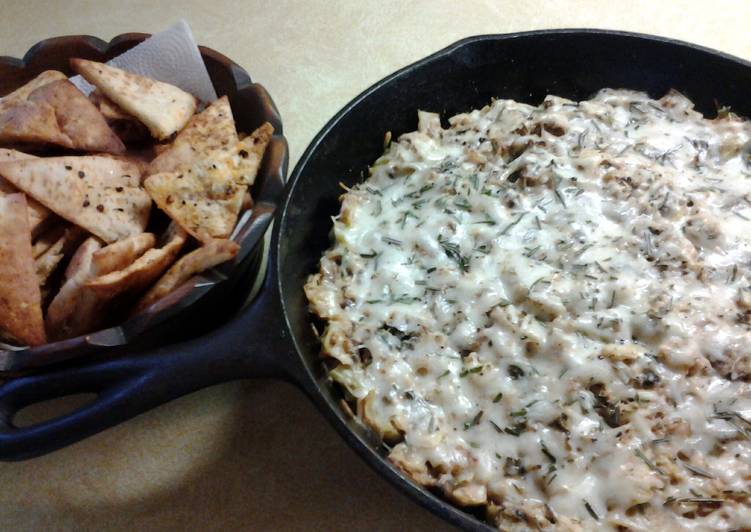
Hello everybody, it is John, welcome to my recipe page. Today, I’m gonna show you how to make a special dish, turnip greens in japanese broth (kabu-ohitashi). It is one of my favorites. This time, I’m gonna make it a bit tasty. This will be really delicious.
Ohitashi is a simple, light, and deeply flavorful Japanese side dish of blanched greens in a soy-based marinade. Spinach is one of the most common vegetable choices, but you can use other leafy greens, like watercress, Swiss chard, or turnip greens, or try slender green vegetables, like. Japanese turnip greens are edible as well and have a similar taste to mustard greens.
Turnip Greens in Japanese Broth (kabu-ohitashi) is one of the most favored of current trending foods on earth. It’s simple, it’s fast, it tastes delicious. It is enjoyed by millions daily. Turnip Greens in Japanese Broth (kabu-ohitashi) is something that I’ve loved my whole life. They’re fine and they look fantastic.
To begin with this particular recipe, we must first prepare a few components. You can cook turnip greens in japanese broth (kabu-ohitashi) using 6 ingredients and 8 steps. Here is how you cook it.
The ingredients needed to make Turnip Greens in Japanese Broth (kabu-ohitashi):
- Make ready 1 bunch turnip greens in good condition
- Prepare 13-15 g finely shaved katsuo-bushi (bonito flakes for Japanese stock) (or 2 handfuls)
- Get 1 Tbsp cooking sake
- Prepare 1/2-1 tsp salt
- Get 2 tsp sesame oil
- Take 2 pinches fresh yuzu citrus zest/sliced yuzu skin
A very versatile leafy green with a soft mustard flavor. Simmering with other ingredients probably is the most common preparation method for mizuna in Japan or with Japanese food. This simple Japanese side is made by blanching leafy greens (spinach works Ohitashi is a simple, light, and deeply flavorful Japanese side dish of blanched greens in a soy-based marinade. Make it ahead, then have it ready.
Steps to make Turnip Greens in Japanese Broth (kabu-ohitashi):
- Trim turnip bulbs from greens. Wash the greens well and prepare a large pot of boiling water with a few pinches of salt.
- When the water boils, put in the greens with the thicker stalk end first, then submerge the rest of the leaves part into the pot with chopsticks.
- Cook for 30-60 seconds until the greens are bright green. Remove from boiling water and right away rinse in cold water so it stops cooking.
- Drain, and gently squeeze out extra water and then cut the leaves into 5 cm pieces. Put aside for now.
- Now let's make the Japanese dashi! You need about 13-15 grams (2 handfuls) of katsuobushi flakes. Or, if you have your own broth, just use 400 ml of that.
- Bring 400 ml water to a boil. Add the katsuobushi flakes, turn the heat to low and simmer for 3 minutes. Stop the heat and let it set for 1 minute. Lastly strain out the flakes with a strainer/colander. Now you have dashi!
- Put the dashi back into a medium pot. Add the salt, soy sauce and sake to the pot and bring to a boil. Turn to low. Add the turnip greens from before and when it boils again, stop the heat.
- Put the greens into a large dish (or separate into everyone's bowls). Pour over some of the broth, a dash of sesame oil and if you have it, some thin slices of yuzu skin or zest. :D
The Best Japanese Broth Soup Recipes on Yummly Asian Broth & Soup, Spinach And Tofu Miso Soup, Turmeric Broth Soup With Wild Rice And Vegetables. Hillshire Farm® Turkey Smoked Sausage, fresh turnip greens, low sodium. Turnips can be grown in a variety of climates and you can plant them in your garden almost anywhere. But rutabagas are a cold climate crop that can be damaged by Rutabaga greens are a bit closer to cabbage or collard greens in flavor and texture, and they are not as tangy as turnip greens. japan, turnip, greens, japanese, kabu, nature, senmaizuke More similar stock images.
So that’s going to wrap this up with this exceptional food turnip greens in japanese broth (kabu-ohitashi) recipe. Thank you very much for your time. I am sure you will make this at home. There’s gonna be interesting food at home recipes coming up. Don’t forget to save this page on your browser, and share it to your loved ones, colleague and friends. Thank you for reading. Go on get cooking!


